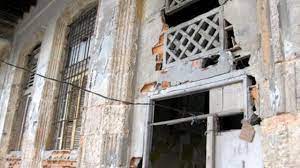HAVANA: In the Cuban capital, where collapses are common, Elisa Bacyan, a resident of one of the roughly 700 apartment buildings deemed unsafe, says, “When we go to sleep, it is with the fear of not waking up again.”
Bacyan, 51, and her 12-year-old daughter Lesyanis live alone in the 1940-built “Edificio Cuba” in an older neighborhood.
Like the majority of structures on the socialist island, the six-story structure is owned by the Cuban State. It has 114 tiny rooms that 92 families can live in without paying rent.
According to the locals, it was once a luxurious hotel.

Today, the floorboards are cracked, the ceilings, columns, and walls of the passageways reveal bent metallic skeletons, and there are numerous cracks and leaks.
With tears in her eyes, Bacyan stated that kids “cannot even play here because every now and then a portion (of building) comes down.”
Buildings collapse completely or partially in Havana shockingly frequently due to oversight and maintenance issues, which is exacerbated during the hurricane and rainy season from June to November.
In 2020, a balcony gave way, killing three young girls.
According to official media, this year’s first June rains caused 146 buildings in the capital to partially collapse and two to completely come down, resulting in the death of a 69-year-old man.
Who will come after who is unknown?
According to official data, by the end of 2020, about 37 percent of the 3.9 million residential buildings in the nation were deemed to be in a bad condition.
Bacyan’s residence, “Edificio Cuba,” had “structural defects from floor to ceiling,” according to a building expert who spoke to AFP but asked that his name not be used for fear of retaliation.
The recommendation is against residing there.


